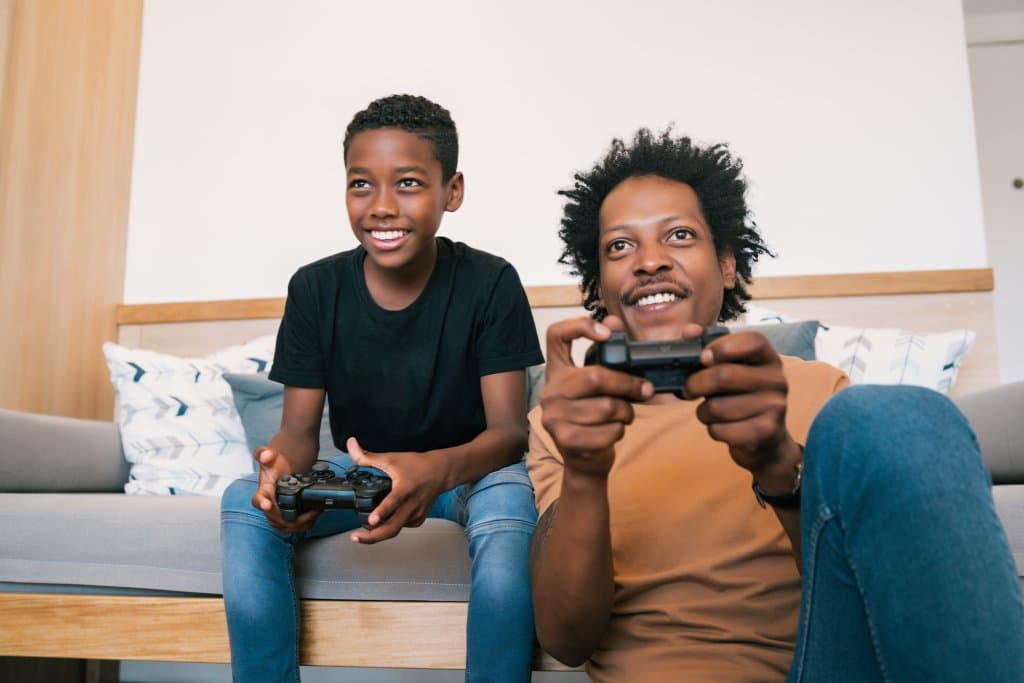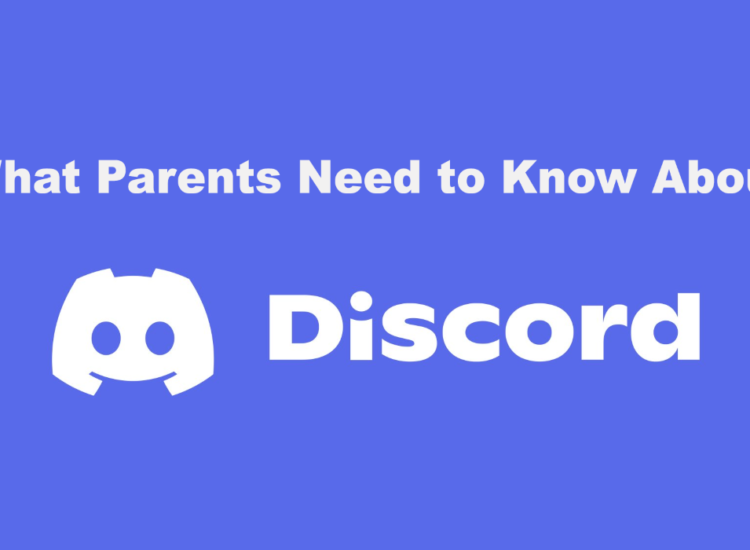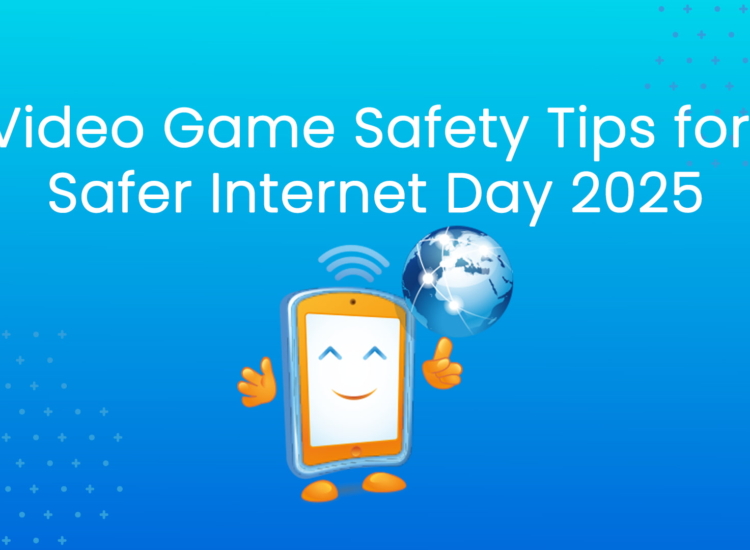How to Best Manage Video Games With Kids of All Ages

In a family with four children across a wide range of ages, managing video games can sometimes be a daunting undertaking. A 16-year-old girl has a much different maturity level than her 7-year-old sister. While the 12-year-old can sometimes play with the 9-year-old, it has to be a title that’s mature enough, but not too mature, and still be fun for both kids. It’s a familiar dance in our household, but not one without its stumbles.
Easy mode would be to let chaos reign and let the children fend for themselves, but let’s be real: you’re here because you’re not angling to play the Parenting Game on easy mode.
Embrace an Array of Guidelines with the Flexibility to Evolve
Whatever your family’s size, chances are that you’ll need to contend with having to define rules on a kid-to-kid basis. Sweeping, general rules that apply to all children tend to be reserved for wider conversations around online safety and multiplayer games – things like “don’t ever tell a stranger where you live, or your real name,” and “never leave the platform to talk to a stranger.” For our older kids, it’s reminding them that the internet is like a very old, cranky elephant: it never forgets when you make a mistake (i.e., sending texts, pictures, messages that you shouldn’t).
While the solution to disparate screen time needs is complex and challenging, it requires more nuance than simply setting rules up and then letting them run. The first stop, no matter where you start with defining guidelines, should always be ESRB ratings. Understanding the reason why Grand Theft Auto Online (Mature 17+) may not be the right choice for your 12-year-old (right now) can be as simple as seeing what content your child would be interacting with should you say “yes.”
The ESRB ratings provide a baseline understanding of interactive gaming content, as well as guidelines for which age range this particular game would be appropriate. But not all children fit into the same category of maturity. Checking the Content Descriptors for more in-depth information on what’s in the game will help you make that final decision. For even more specific information, ESRB has rating summaries, which go one step deeper, providing more contextual information around how content is presented to the player. ESRB also includes Interactive Elements to let you know when a game includes the ability to make in-game purchases, communicate with other players via text or voice, and more.
In our home, we talk about consuming content in the same way we talk about eating food. There will be complex tastes that may be too much for a developing palate to handle. So if we put complex food in front of our youngest children, they may not be ready to enjoy it. This goes the same for video games.
The internet is like a very old, cranky elephant: it never forgets when you make a mistake.
The ESRB’s Content Descriptors are a good way to determine what’s “just right” for your children at any given time. Likening the Content Descriptors to the nutritional label on all pre-packaged foods is a good way to understand why we pay attention to what goes into a game’s rating. Just like we pay attention to sodium, sugar, carbohydrates, and fats, we need to do the same with content.
As my kids get older and develop new interests in unexplored genres, we revise our guidelines to fit where they are in their development journey. Is the 9-year-old finally old enough for Fortnite (Teen 13+)? Perhaps. The 7-year-old isn’t quite there. But the 16-year-old is definitely ready for another dive into Resident Evil (Mature 17+) while the 12-year-old embraces Diablo 3 (Mature 17+) with Grandpa and Destiny 2 (Teen 13+) with Mama and Dad.
Our home has the benefit of game-savvy parents. But if you don’t know much about video games, turn to your knowledge of television and movies to make comparisons. Letting your school-aged kiddo watch Frozen isn’t much of a stretch because it’s made for kids. But how would you feel about letting them watch Rick and Morty? Sure, it’s a cartoon, but it has violence, sexual themes, and strong language. If you’re able to break down movies and television into categories and content descriptions, then you’ll be able to do the same with games.
As always, flexibility is key.
Ensuring Safety for Younger Children
This is the key issue that families with multiple children face: how do we ensure that the younger children aren’t consuming content outside of their maturity level? Are there ways to make certain that older children are able to play the games that they want to play without fear of younger siblings experiencing content before they’re ready?
Part of the solution is in having conversations with all the kids in the household so everyone is familiar with the rules and signals around video game content. The cornerstone of this strategy is in making sure that little ones still have access to the people playing the games without being in the same space.
Make Use of Visual Cues for Younger Children
Not every home is going to be a big house in the suburbs. Some families live in smaller spaces, like condos or apartments, where there are very few places that older children can have time to play more mature titles without worrying about little ones being underfoot. In these smaller spaces, it’s important to communicate with younger children that when a specific signal is used, the living room is off limits. This is also helpful for when the parents want to load up The Last of Us Part 2 (Mature 17+) and don’t want a little one stumbling into that level of violence.
If a younger child needs something from someone in that room, even knowing that the visual cue of “Do Not Enter” is up, they should know that they can knock on a wall, a door, a bookshelf, or a window to get that person’s attention and signal that they should pause the game.
In our house there’s a whiteboard outside of the office that we write on when the children aren’t allowed in for any reason. It’s a long-established rule that ensures that appropriate measures are taken while still taking care of small children’s needs.
Make Use of “Gaming Zones”

If the game was a “soft” T-rated game (where the most we had to contend with was a bit of strong language), then we didn’t worry too much. We always talk to the little ones about the appropriateness of the game to determine whether or not they could spectate (a beloved pastime in our home among all of the children). If it wasn’t, they’d stay away unless they needed something in the kitchen.
Instead, the little ones would use their smaller screens (iPads or laptops) or the television in the guestroom for their entertainment. After dinner, they would either swap zones with their older siblings or join them for a different game that they’ll all play together.
Be Present If the Content Is Beyond a Child’s Maturity Level
I am always a firm proponent of determining maturity level alongside age rating. For example, we played Diablo 3 (Mature 17+) with our 12-year-old for their birthday, but we played it as a family to make sure we were there to contextualize any unfamiliar content.
There are games that I may make an exception for, especially if the older sibling is tuned into the younger sibling’s comfort levels.
Those moments are great bonding experiences. As long as the content doesn’t veer too far off course, and I’m standing by to help explain anything that may be a little outside of my kid’s understanding, it’s a good opportunity to encourage that level of communication between siblings.
Figuring Out Family Game Time Across Disparate Ages
The easiest thing to do when setting up game time with the family is find a game genre that everyone enjoys and is appropriate for the youngest child. We make sure that, just like with family movie time, there’s a rotation in who chooses what to play.
In smaller spaces, it’s important to communicate with younger children that when a specific signal is used, the living room is off limits.
It could be playing Mario Kart 8 Deluxe (Everyone) on Nintendo Switch, if everyone’s in a racing mood. Or maybe we would team up to go exploring and jumping around in Spelunky (Teen 13+). If we’re feeling into building, we’d load up our Minecraft (Everyone 10+) server or jump into Animal Crossing: New Horizons (Everyone) for some fishing or crafting. Sometimes, it’s even as simple as passing the controller back and forth, playing a single-player game on the couch (like Super Mario Odyssey (Everyone 10+)).
Setting Expectations and Reinforcing the Rules
Now that expectations about who gets to play what, when, and where have been established, there’s the not-so-tiny complexity of making sure that there’s consistency across ages and there’s continued communication between the parents and the children.
Kids don’t always follow the rules, especially if they don’t understand why the rules are being implemented. There may be pushback and a good possibility that there will be outcries of “it’s not fair” along the way.
Dissent won’t matter so much if you lean into technology to help enforce boundaries when you’re not in the room acting as a Micromanaging Parent (which you don’t want, anyway). This is where Parental Controls come into play for each of the platforms that you allow your children to use, including Android/iOS, Nintendo, PlayStation, Xbox, and Windows 10.
The trick is to balance verbal reinforcement with a technological backstop for when children push boundaries.
Be As Dialed into What They’re Playing As You Can
This is where I’ve fallen down as a parent, especially with content that is billed as “kid-friendly”
There have been plenty of times where I’ve gotten it right and made sure that I’m vetting that content before the kids get to it. But, there have been an equal number of times, especially in my early days as a parent, where I wasn’t as diligent.
When I started paying very close attention to what the kids were playing and interacting with, they balked at first. They didn’t get why I was so interested all of a sudden. So, we talked about it at length and I explained why it’s important for me, as their parent, to be almost as connected to their games as they are. It took them some time to realize that I was coming at this from a place of care, rather than control, and once they understood my motives, they eased up a bit.
Now that my kids are older, we have conversations about what they’re playing regularly. We talk about what they’re most interested in — the 9-year-old wants to play Fortnite next and the 7-year-old would like to turn the clock forward so she can play horror games like her big sister — and make plans to when they’ll be able to play them, if it’s not right away.
Each child, including the 16-year-old, must ask permission to install any apps on their iPads, including games. I subscribe to Apple Arcade, which ensures that they have access to age-appropriate games that aren’t chock-full of ads, as many free-to-play and “freemium” mobile games tend to be.
These conversations open the door to improve and adapt the rules while remaining inclusive in how we’re enforcing them.
Amanda Farough has spent much of the last ten years running businesses, making websites, and writing about video games… usually within a few hours of one another. She’s a dedicated speaker with over a decade of experience and has presented/moderated at a variety of conferences, including GamesBeat Summit, Playcrafting’s Women in Games event, GameDaily Connect, PAX East/West, and a smattering of small business, digital marketing, and branding conferences.
These days, Amanda is the co-host of the Virtual Economy podcast, mama at Ready Player Mom (and part of the Radically Kind Gamers stream team) on Twitch, business & entertainment writer, and co-host on the Engaged Family Gaming podcast. Amanda also holds a seat on the board of directors at Hit Save! (a video game preservation nonprofit) as Director of Communications.




